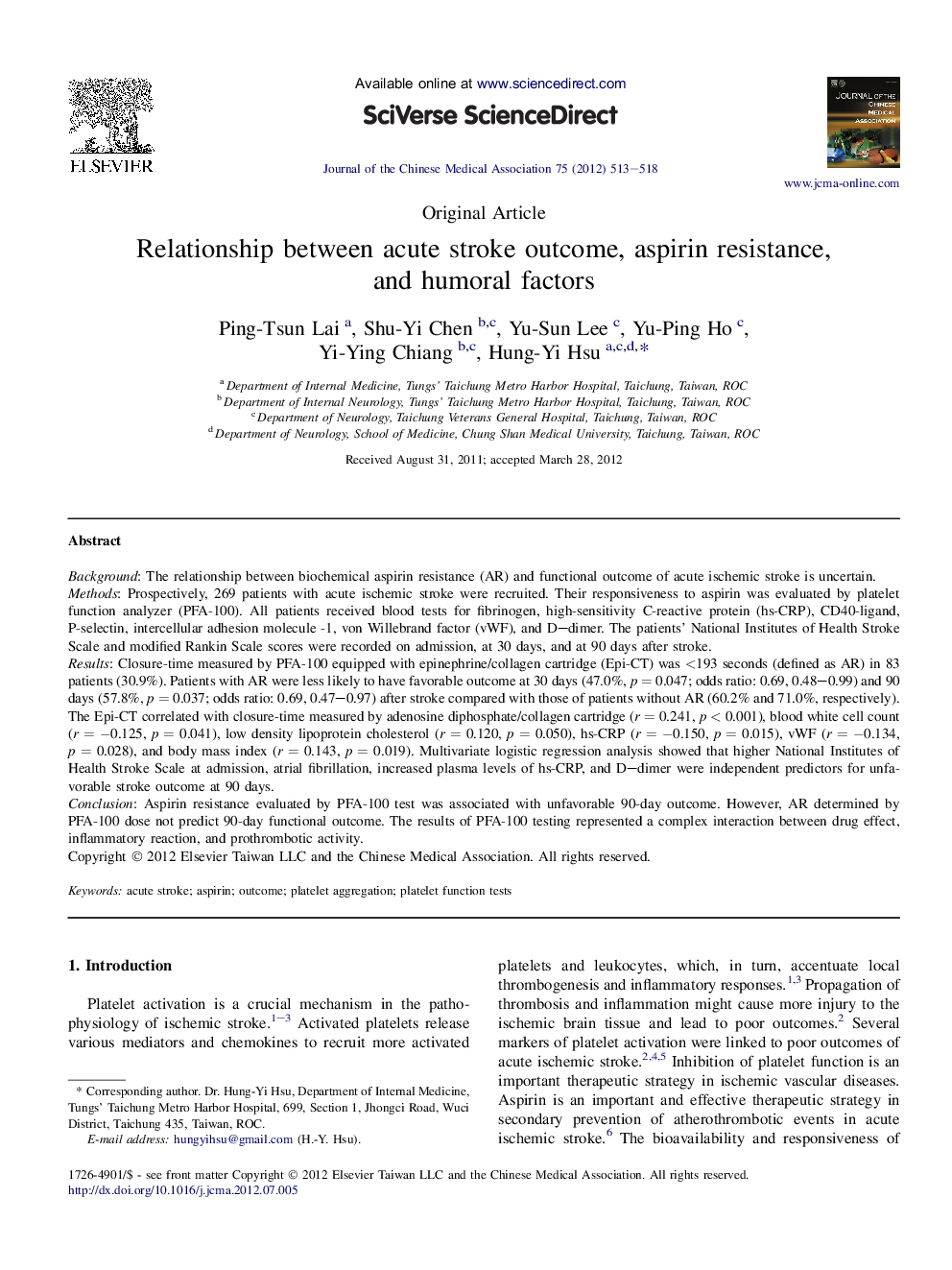| Article ID | Journal | Published Year | Pages | File Type |
|---|---|---|---|---|
| 3476342 | Journal of the Chinese Medical Association | 2012 | 6 Pages |
BackgroundThe relationship between biochemical aspirin resistance (AR) and functional outcome of acute ischemic stroke is uncertain.MethodsProspectively, 269 patients with acute ischemic stroke were recruited. Their responsiveness to aspirin was evaluated by platelet function analyzer (PFA-100). All patients received blood tests for fibrinogen, high-sensitivity C-reactive protein (hs-CRP), CD40-ligand, P-selectin, intercellular adhesion molecule -1, von Willebrand factor (vWF), and D–dimer. The patients' National Institutes of Health Stroke Scale and modified Rankin Scale scores were recorded on admission, at 30 days, and at 90 days after stroke.ResultsClosure-time measured by PFA-100 equipped with epinephrine/collagen cartridge (Epi-CT) was <193 seconds (defined as AR) in 83 patients (30.9%). Patients with AR were less likely to have favorable outcome at 30 days (47.0%, p = 0.047; odds ratio: 0.69, 0.48–0.99) and 90 days (57.8%, p = 0.037; odds ratio: 0.69, 0.47–0.97) after stroke compared with those of patients without AR (60.2% and 71.0%, respectively). The Epi-CT correlated with closure-time measured by adenosine diphosphate/collagen cartridge (r = 0.241, p < 0.001), blood white cell count (r = −0.125, p = 0.041), low density lipoprotein cholesterol (r = 0.120, p = 0.050), hs-CRP (r = −0.150, p = 0.015), vWF (r = −0.134, p = 0.028), and body mass index (r = 0.143, p = 0.019). Multivariate logistic regression analysis showed that higher National Institutes of Health Stroke Scale at admission, atrial fibrillation, increased plasma levels of hs-CRP, and D–dimer were independent predictors for unfavorable stroke outcome at 90 days.ConclusionAspirin resistance evaluated by PFA-100 test was associated with unfavorable 90-day outcome. However, AR determined by PFA-100 dose not predict 90-day functional outcome. The results of PFA-100 testing represented a complex interaction between drug effect, inflammatory reaction, and prothrombotic activity.
